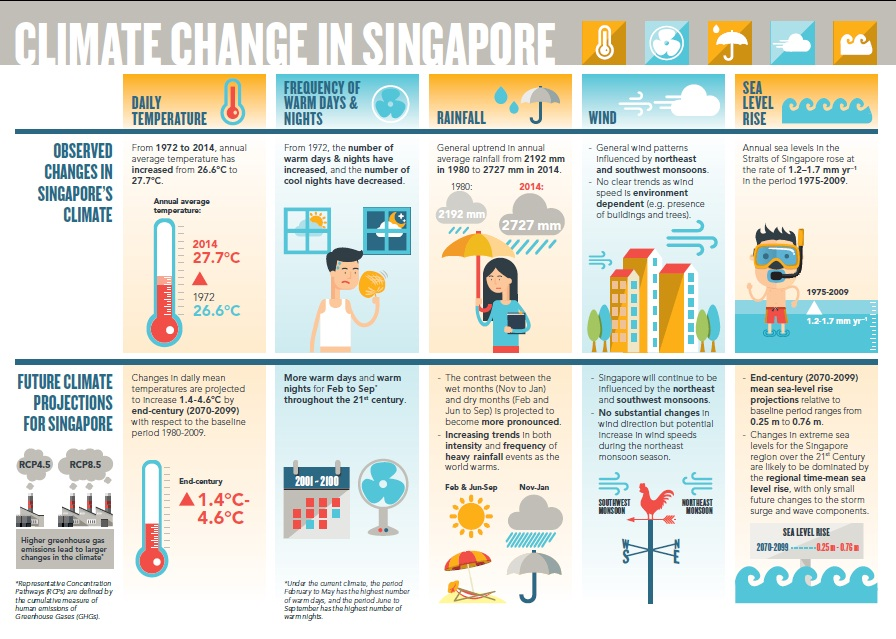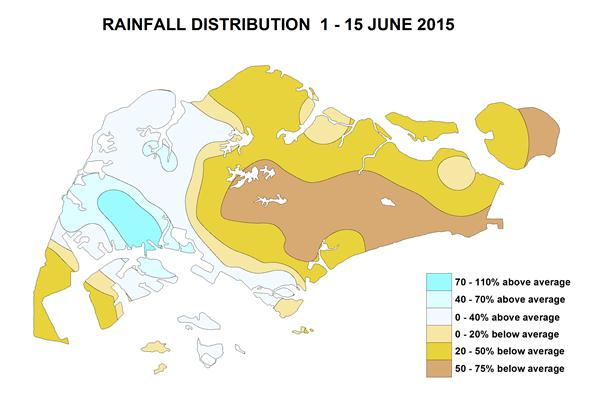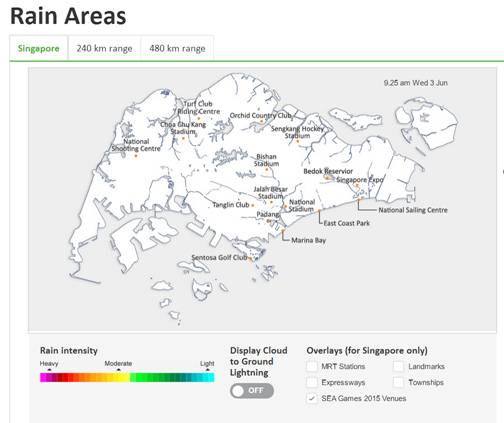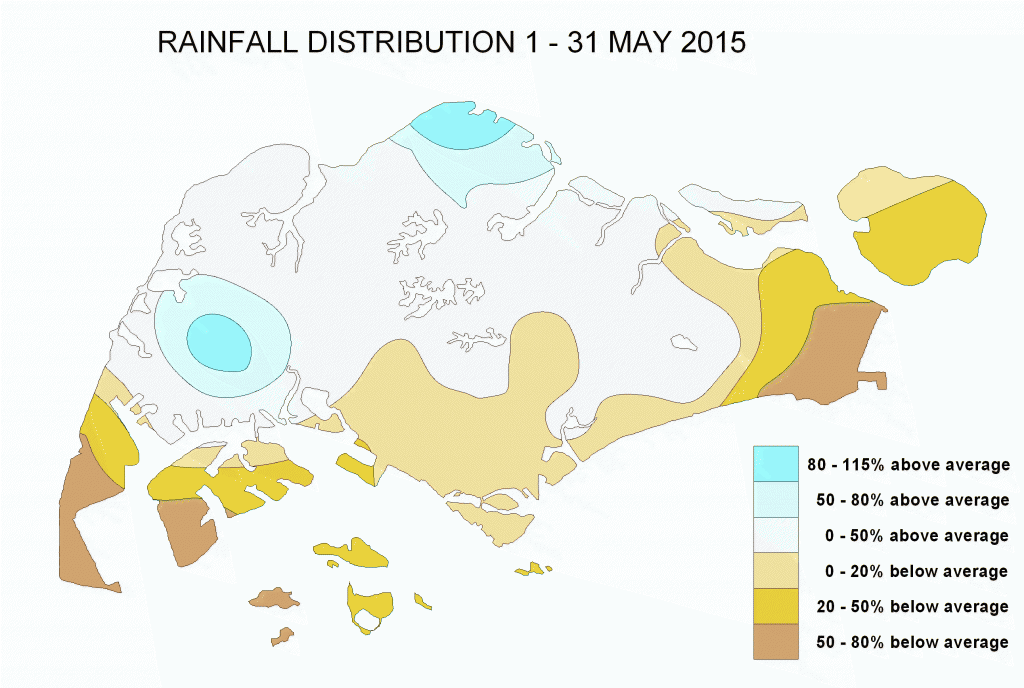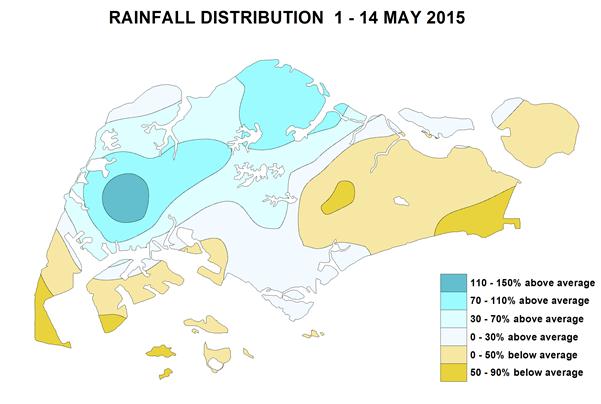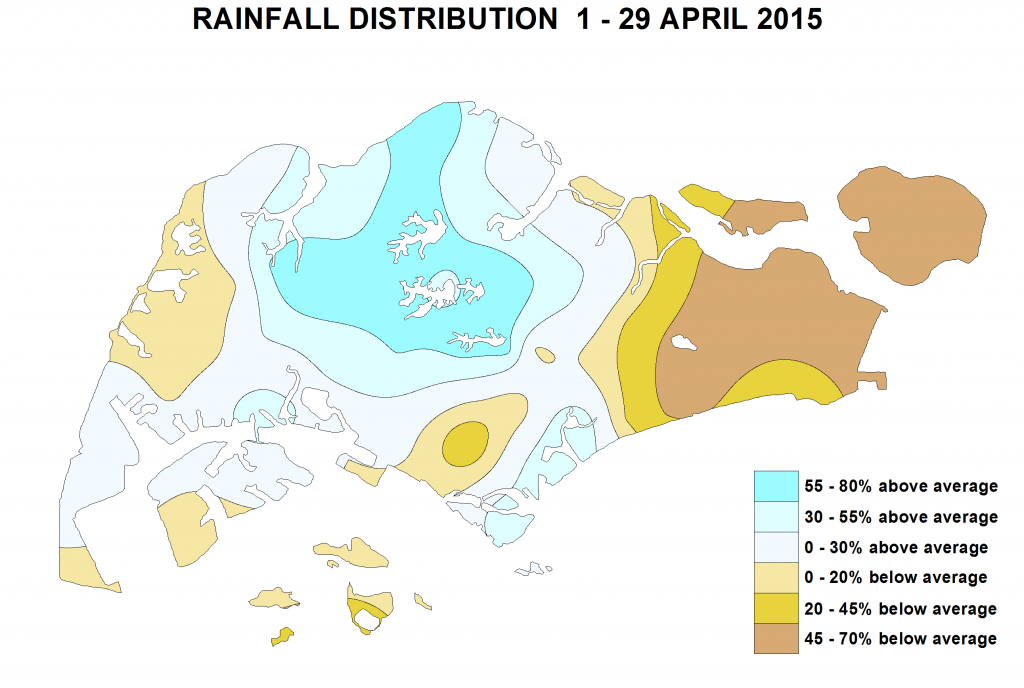Study results consistent with 5th Assessment Report in projecting global sea-level rise, higher temperatures and more extreme rainfall in the region
Singapore, 15 April 2015 – Meteorological Service Singapore’s (MSS) Centre for Climate Research Singapore (CCRS) has released the findings for Phase 1 of the Second National Climate Change Study at a meeting of the Climate Science Experts Network[1]. The outcomes of the new Singapore study are consistent with those of the Inter-governmental Panel on Climate Change (IPCC) 5th Assessment Report (AR5) which projects sea level rises globally, as well as higher temperatures and more extreme rainfall for Singapore and the surrounding region. The details are outlined in paragraphs 5-11 below.
Background of Phase 1 of the 2nd National Climate Change Study
2Under the auspices of the Inter-Ministerial Committee on Climate Change (IMCCC), the National Environment Agency (NEA) in collaboration with the Met Office Hadley Centre in the United Kingdom commissioned Phase 1 of the 2nd National Climate Change Study, which aimed to provide projections of changes in the main climate variables of interest to Singapore. The key highlight of this report was the use of high resolution climate models to project regional climate and sea level changes with finer spatial detail for the 21st century over the region, centred on Singapore. The study was completed early this year.
3Phase 2 of the study, which started in end 2014, is making use of the projections from Phase 1 to examine the climate change impacts on areas such as water resources and drainage, biodiversity and greenery, network infrastructure and building infrastructure. This in turn will guide Government agencies in their planning and will serve to shape Singapore’s climate change resilience plans. Key findings from Phase 2 can be expected by end 2015.
4Phase 1 of the study makes use of the same global climate model projections that contributed to many of the findings of the physical science component of the AR5 published in 2013 (Please refer to Annex A for details of the IPCC, working groups and the assessment reports). A carefully chosen sub-set of the models for two future trajectories of greenhouse gas concentrations in the atmosphere was downscaled to a higher resolution of 12 km for the Southeast Asian region. The first trajectory (RCP8.5)[2] is related to a ‘business as usual’ scenario in which we continue to use fossil fuels with no mitigation and thus results in very high greenhouse gas emissions that continue to increase throughout the 21st century. The second trajectory (RCP4.5) assumes future action to control emissions, which peaks in mid-century and then declines. The results from the downscaled projections with these two scenarios are the basis for the study’s findings[3].
Findings on Temperature
5For the period of 2070 – 2099 (relative to 1980-2009), the study projects that average surface temperatures across Singapore will increase by 1.4°C – 2.7°C under the RCP4.5 greenhouse gas trajectory and by 2.9°C – 4.6°C for RCP8.5.
6The findings imply that the unusually warm temperatures Singapore encounters occasionally could become the norm in the future and that days with ‘record’ temperatures above those experienced historically will become more frequent. Due to the high levels of humidity in Singapore, these projected rises in temperature will lead to increasing thermal discomfort and heat stress for those working outdoors.
7The high levels of temperature increase under the RCP8.5 scenario will be realised only if there is no global mitigation action to reduce greenhouse emissions.
Findings on Rainfall
8The projections from most models show an increasing trend, particularly during the wetter season, in the intensity and frequency of heavy rainfall events over Singapore.
9For seasonal average rainfall, the contrast between the wetter and drier months is projected to become more pronounced, especially for the RCP8.5 trajectory and by the end of the century. The study projects an upward trend in seasonal mean rainfall during the wet season of November to January, as well as greater dryness during months that are already relatively drier in the current climate (February and June to September).
Findings on Sea Level
10For the period of 2070 – 2099 (relative to 1980-2009), the study projects a mean sea level rise of 0.25m – 0.60m under the RCP4.5 greenhouse gas trajectory and 0.35m – 0.76m for RCP8.5. Under the ‘high-emissions’ RCP8.5 greenhouse gas trajectory, the study projects a total rise of 0.45m – 1.02m by the year 2100.
11The study projects no consistent future changes in the amplitude of extreme sea level events, such as as wind driven coastal storm surges and high waves. These events will, however, occur against a backdrop of increased mean sea levels.
Staying Resilient In The Face Of Climate Change
12The effects of climate change operate in the long term, but the Government is taking a proactive approach to address its potential impact. The Inter-Ministerial Committee on Climate Change (IMCCC) was established in 2007 to enhance Whole-of-Government coordination on climate change policies. The Resilience Working Group (RWG), an inter-agency platform under the IMCCC, studies Singapore’s vulnerability to the effects of climate change and recommends long-term plans that ensure the nation’s adaptation to future environmental changes. The findings from this study will provide the basis by which we continually develop long-term infrastructure adaptation plans to appropriately address the effects of climate change on Singapore’s physical environment. The Government has also set aside at least $50 million for climate resilience related studies to support Singapore’s adaptation planning efforts.
Report on Phase 1 of the Second National Climate Change Study
13A Stakeholder Report which provides a summary of the study’s methodologies and findings is now available on the CCRS website (https://ccrs.weather.gov.sg/index/). The Report is intended for those who will be actively engaged in the use of the projections for impact studies and adaptation planning.
[1] The Climate Science Experts Network (CSEN) was launched in January 2012 by the Meteorological Service Singapore (MSS) and the Ministry of the Environment and Water Resources (MEWR). CSEN is a technical and sharing platform for Singapore-based experts in the physical science of climate change, bringing together academics from different disciplines to forge a collaborative framework.
[2] ‘Representative Concentration Pathway’ (RCP) 8.5. In AR5, a selection of four greenhouse gas concentration pathways were used as the input to drive climate models: RCPs 2.6, 4.5, 6.0 and 8.5. The higher numbers indicate greater projected imbalances in the climate by the year 2100.
[3] The Representative Concentration Pathways (RCPs) are labelled by the change in the approximate total radiative forcing in the year 2100 relative to 1750, due to the enhanced greenhouse effect associated each pathways. For example, under RCP4.5 this change is 4.5 Wm-2.
– End –
ANNEX A
Overview of the Intergovernmental Panel on Climate Change
The Intergovernmental Panel on Climate Change (IPCC)
1The IPCC is the international body for assessing the science related to climate change. Set up in 1988 by the World Meteorological Organization (WMO) and United Nations Environment Programme (UNEP), the IPCC provides policymakers with regular assessments of the scientific basis of climate change, its impacts and future risks, and options for adaptation and mitigation.
2IPCC assessments are policy-relevant but not policy-prescriptive. They present projections of future climate change based on different scenarios, outline the risks that climate change poses, and discuss the implications of response options, but they do not tell policymakers what actions to take.
3The IPCC provides rigorous and balanced scientific information to decision-makers because of its scientific and intergovernmental nature. Participation in the IPCC is open to all member countries of the WMO and United Nations. It currently has 195 members. The Panel, made up of representatives of the member states, meets in Plenary Sessions to take major decisions. The IPCC Bureau, elected by member governments, provides guidance to the Panel on the scientific and technical aspects of the Panel’s work and advises the Panel on related management and strategic issues.
IPCC Assessment Reports
4The IPCC assessment reports are written by leading scientists who volunteer their time and expertise as Coordinating Lead Authors and Lead Authors of the reports. They enlist hundreds of other experts as Contributing Authors to provide complementary expertise in specific areas. Assessment reports undergo multiple rounds of drafting and review to ensure they are comprehensive and objective, and are produced in an open and transparent way. Thousands of other experts contribute to the reports by acting as reviewers, ensuring the reports reflect the full range of views in the scientific community. Teams of Review Editors provide a thorough monitoring mechanism for making sure that review comments are addressed.
5The IPCC works by assessing published literature. It does not conduct its own scientific research. The authors provide information on areas where knowledge is well-established and where understanding is evolving, as well as where multiple perspectives exist in the literature.
6 The IPCC’s First Assessment Report (FAR) in 1990 played a decisive role in leading to the United Nations Framework Convention on Climate Change (UNFCCC), which was opened for signature at the Rio de Janeiro Summit in 1992. The Second Assessment Report (SAR) of 1995 provided key input for the negotiations of the Kyoto Protocol in 1997. The Third Assessment Report (TAR) of 2001 provided further information relevant to the development of the UNFCCC and the Kyoto Protocol. The 4th Assessment Report (AR4) paid greater attention to the integration of climate change with sustainable development policies and the relationships between mitigation and adaptation, and led to a wider awareness of climate change issues in the general public and among decision-makers. In 2007, after the release of AR4, the Nobel Peace Prize was awarded to the IPCC[1] for its efforts in disseminating knowledge and laying the foundations for action on climate change.
7The 5th Assessment Report (AR5), which will be finalised in 2014, places greater emphasis on assessing the socio-economic aspects of climate change and its implications for sustainable development. It also includes a number of new features such as a new set of climate scenarios, dedicated chapters on sea level change, the carbon cycle and climate phenomena, greater regional detail and information on risk management.
Working Groups under the IPCC
8The authors that produce the assessment reports are mainly organised into three working groups – Working Group I: the Physical Science Basis; Working Group II: Impacts, Adaptation and Vulnerability; and Working Group III: Mitigation of Climate Change.
9Each of the working groups generates a report and a Summary for Policymakers (SPM). AR5 comprises the three reports of the working groups and a fourth section known as the Synthesis Report.
10The Working Group I contribution to AR5 includes assessing observations of the climate system, across the atmosphere, the surface, the ocean and the cryosphere (ice), as well as information on past climate.
[1] As co-recipient with Albert Arnold “Al” Gore, Jr, former US Vice-President and environmental activist.
